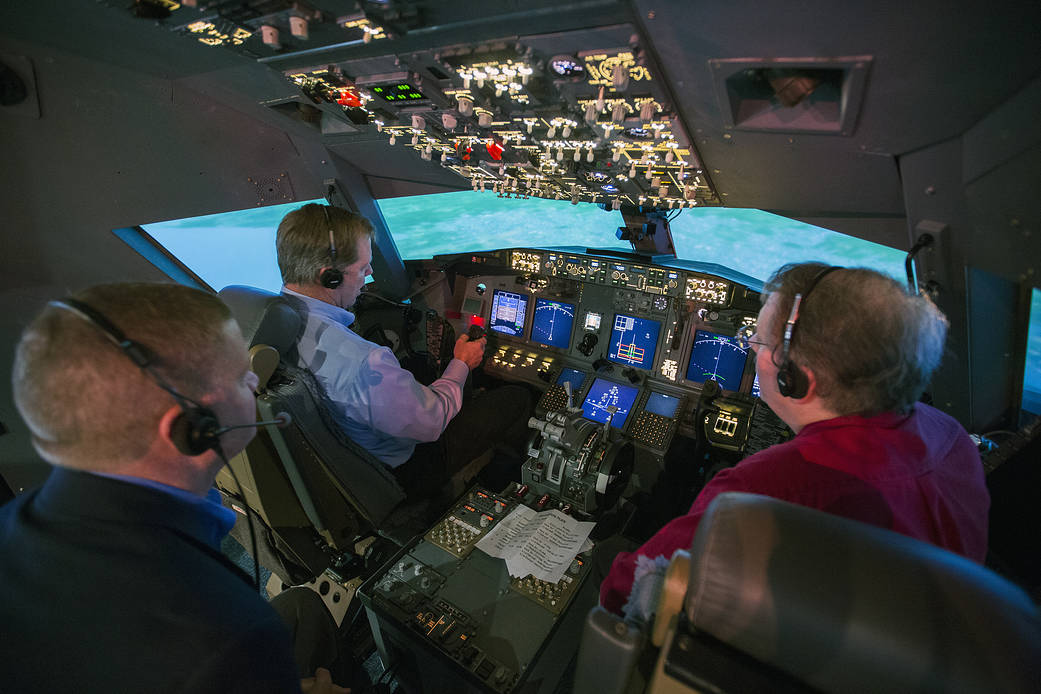
Ten top-level officials from United Airlines visited NASA’s Langley Research Center in Hampton, Virginia on February 24 to learn more about aviation safety and operations systems being developed to improve airline performance and training.
“We have a long heritage of aviation safety work here at NASA Langley,” said George Finelli, head of Langley’s Aeronautics Research Directorate. “But we look to learn from you as well.”
The United group included the company’s chief technical pilot for navigation issues, the senior vice-president for technical operations, the managing director for flight standards, the vice-president of network operations and others.
They came to check out a variety of Langley research that could be beneficial to airlines. One is “enhanced flight vision systems” – technology that uses sensors to help give pilots a clear electronic view outside no matter what the weather or time of day. That would mean better performance in low visibility, which could improve safety and reduce delays.
Researchers have tested the concept in simulators and in flight. “We needed to find bad weather,” said Randy Bailey, NASA Langley research lead. “We flew about 100 hours with a certified system in support of possible new rule-making.”
NASA’s research in enhanced vision cockpit systems helped lead to the certification of commercially available technologies that are now installed in thousands of business jets and cargo planes, but so far no passenger airlines.
Another area of NASA Langley research of interest to the airlines is improved crew training. Researcher Kevin Cunningham showed the United visitors some of the aircraft stall and upset recovering simulation modeling work done in the Integration Flight Deck simulator.
NASA Langley has been working to build better computer models of how planes act when they end up in unusual attitudes, such as steep dives, and conditions, like stalls. Both can lead to aircraft accidents. The airlines could benefit by using improved models in their simulators to give pilots more realistic training in how to recover from unusual events and prevent potential accidents.
Another stop included NASA Langley research on crew attention monitoring – how to better understand how engaged the humans in the cockpit are, where their attention is most focused and how they can be trained to strengthen their attention.



























